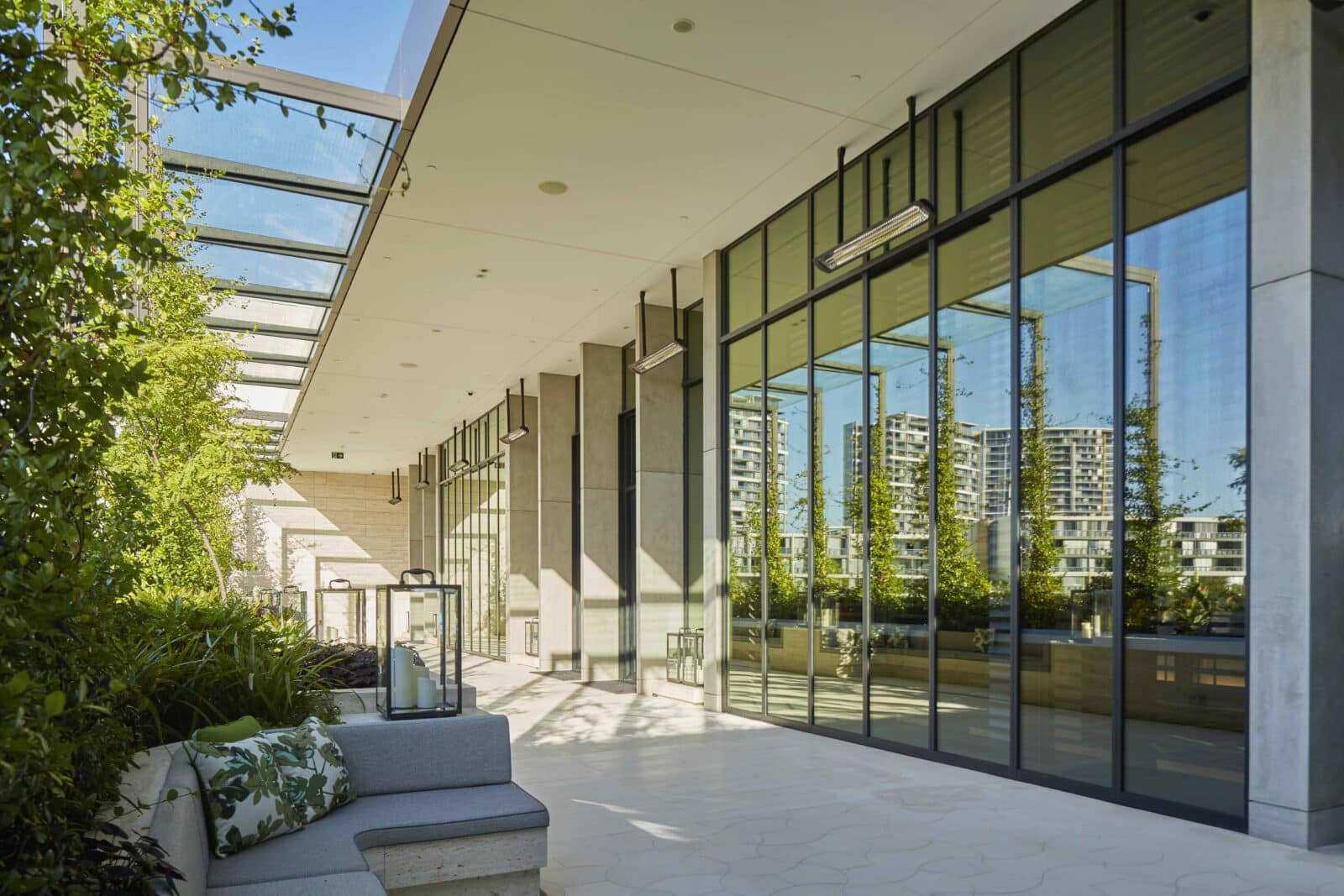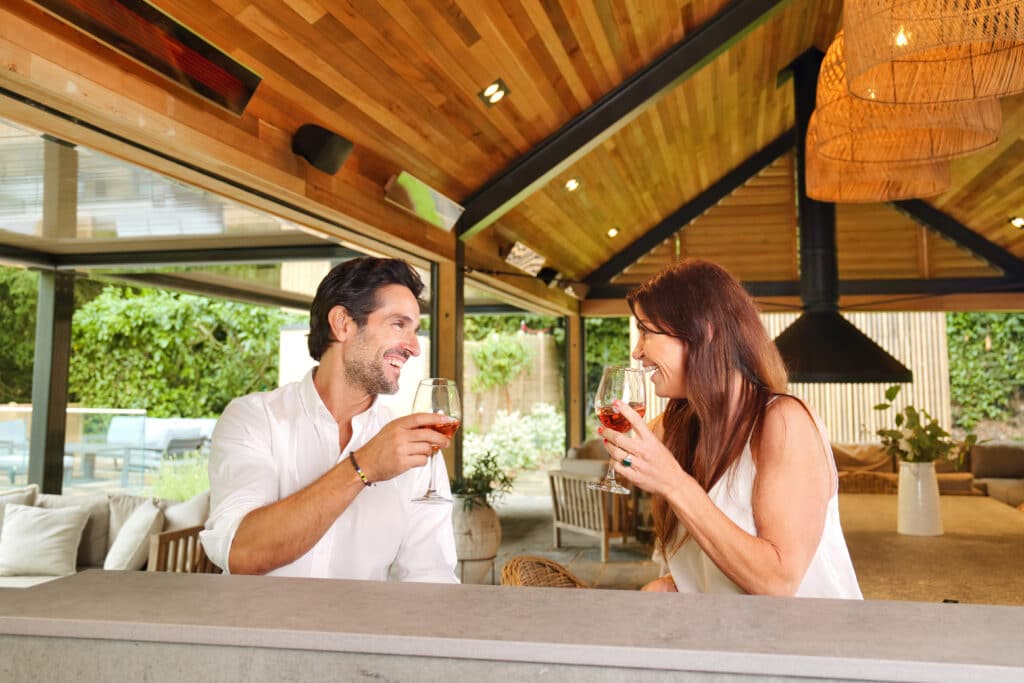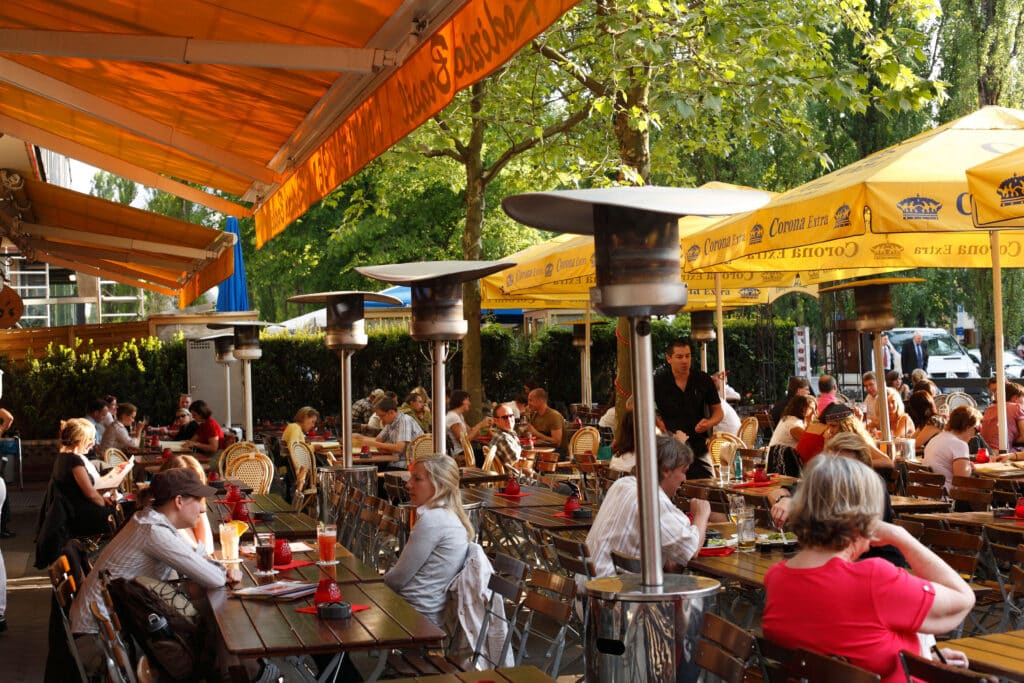Across the world, the return to in-office work is a widespread change that’s bringing people together. Now, companies are creating welcoming spaces with amenities such as outdoor heating that allow for different ways to work
In the world of office culture, corporations and business leaders are pursuing the advantages of increased in-person collaboration in the post-pandemic world, driving a wave of returning to in-office work. As of now, 90% of companies say they’ll return to the office by the end of 2024. This shift represents a welcomed transition, signifying a return to collaborative, vibrant work environments that fosters creativity, teamwork, and a sense of shared purpose. In this move to redefine work norms, the amenities offered by Class A office spaces play a pivotal role in fostering a productive and comfortable environment.
In a survey released by advisory firm Future Workplace called “The Employee Experience” revealed that employees crave access to light and connection to the outdoors. Polling over 1,500 employees, they found that access to natural light and the outdoors are the number one amenity attribute of the workplace, outranking onsite cafeterias, fitness centers, and onsite childcare. Having the option to access outdoor work areas not only attracts talent but helps retain it. Without a doubt, the rise of office amenities like outdoor office workspaces reflects the resurgence and value of collaborative, in-office work.
The Changing Landscape of Office Environments
The modern office is a place that should be inviting as it is collaborative. In turn, clients and designers are adapting to new paradigms of work. These range from the desire to move outdoors, like including rooftop gardens and alfresco meeting spaces, to shaping the way we perceive and interact with the spaces in an office. Amidst the concrete jungles, green oases are emerging. Gardens, water features, courtyards, and outdoor spaces provide a breath of fresh air, offering employees a connection to nature and a reprieve from heads-down, focused production. John Koga, Senior Vice President of Planning and Design at The Irvine Company states, “water features play a unique role in workplace design, reducing stress and generating a relaxed state that enhances well-being and is conducive to creativity and innovation”. Outdoor and semi-outdoor meeting spaces break the mold of boardrooms, fostering creativity and collaboration.
Thinking beyond traditional workspaces, modern offices are embracing outdoor workspace ideas such as lounge areas designed for relaxation, with everything from meditation spaces to yoga spaces. Some of the more informal settings also encourage spontaneous interactions and socialization among colleagues, fostering team cohesion and collaboration. Additionally, lounge areas can serve as alternative workspaces, allowing employees to escape traditional desks and find inspiration in a more comfortable setting. These amenities contribute to employee well-being, reducing stress and enhancing job satisfaction. Ultimately, incorporating amenity areas in office spaces is an investment in creating a dynamic and inviting workplace culture that supports both individual focus and collective creativity.

Building for More Outdoor Office Spaces
Outdoor office spaces are not merely a trend; they are a strategic choice with multiple benefits. Improved employee health, boosted productivity, enhanced collaboration, and talent retention are among a few of the advantages:
- Improved Employee Well-being and Mental Health: Exposure to fresh air and natural light reduces stress levels, contributing to overall well-being. Biophilia and a connection to nature can further benefit employees throughout an office. According to the International WELL Building Institute, workplace design that incorporates nature “can significantly impact health, satisfaction, and wellbeing.”
- Boosted Productivity and Creativity: Outdoor spaces stimulate creativity and foster a dynamic work environment, which can increase productivity.
- Enhanced Collaboration and Teamwork: Breaking away from traditional meeting rooms, outdoor spaces encourage open communication and teamwork.
- Attraction and Retention of Top Talent: Forward-thinking businesses recognize that outdoor amenities are a draw for top talent, contributing to recruitment and retention efforts. According to Work Design Magazine, different groups of workers like Gen Z are attracted to offices that have integrated office design, including outdoor break areas.
Making sure outdoor spaces are integral components of office and workplace environments involves a thoughtful selection of elements to maximize comfort, functionality, and aesthetic appeal. Incorporating versatile seating arrangements, such as comfortable lounge furniture or collaborative benches, allows employees to choose spaces that suit their work styles. The use of greenery and landscaping not only enhances the visual appeal but also fosters a connection with nature.
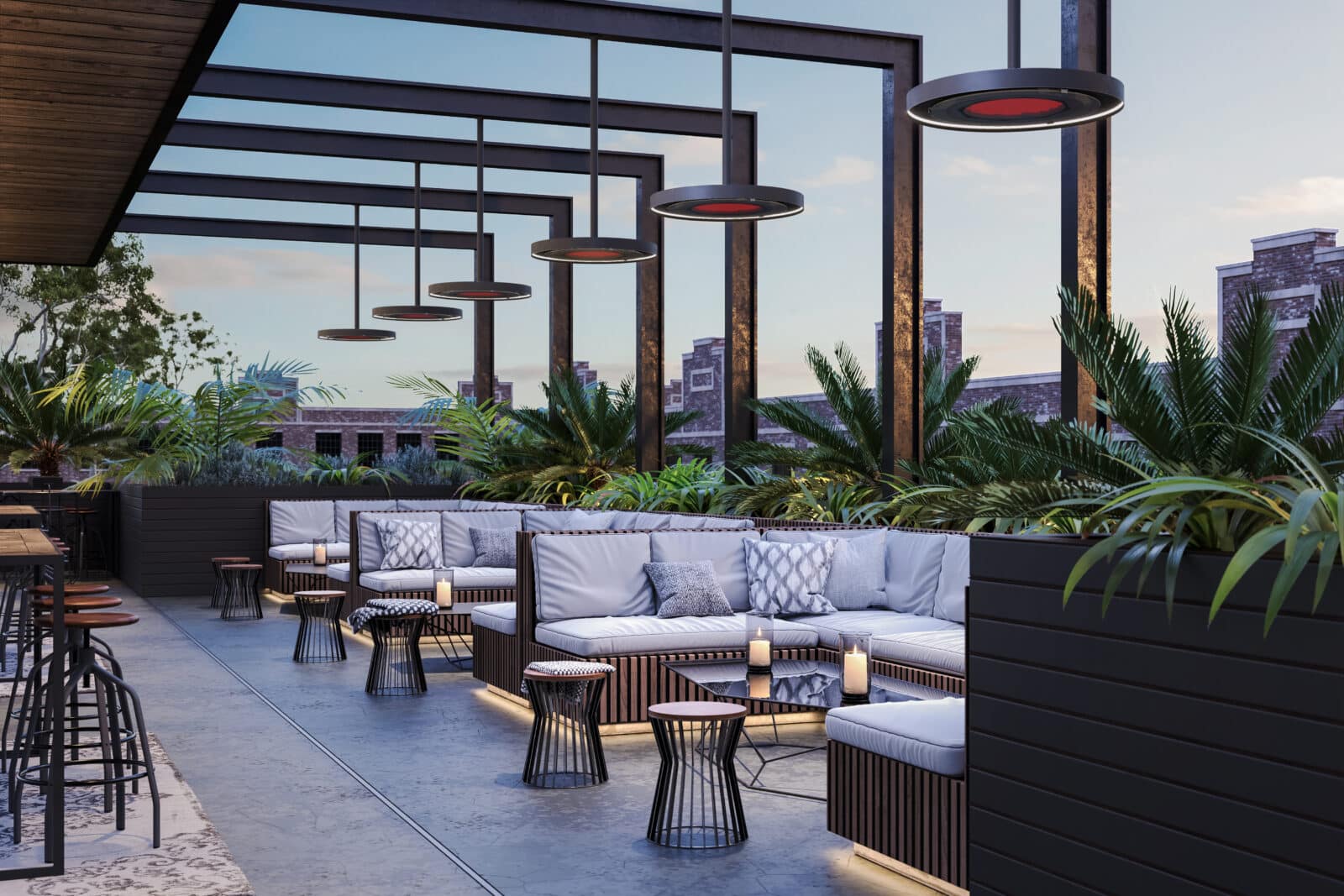
Strategic placement of shading elements, like pergolas or umbrellas, provides relief from direct sunlight. These combine with heaters, such as Bromic’s range of innovative heating solutions, and outdoor temperature control to ensure usability in various weather conditions. Integrating technology, such as outdoor Wi-Fi and power outlets, enables seamless connectivity for work or relaxation. Thoughtful lighting design extends usability into the evening, creating a welcoming atmosphere for after-hours collaboration or events. Ultimately, a well-balanced blend of furniture, heating, shading, and technology transforms outdoor spaces into functional and inviting extensions of the workplace, promoting employee well-being and creating a sense of community.
Making Work Environments Feel Like Home
Creating a workspace that feels like home is more than a luxury; it’s good business. This approach positively impacts the work environment and the people within it. Designing a workspace that mirrors the comforts of home encourages employees to return to the office, facilitating this transition by embracing elements that redefine the traditional office setting.
According to data collected by ADP Research Institute, 2022 was the first year since 1983 where there were three straight quarters of year-over-year drops in average productivity per worker. “When working from home, individuals were still productive, but weren’t productive in sync,” says Tim Morten, Production Director and SEO of Front Giant Studios. He continues, “When we’re together, we can be sure we’re all rowing in the same direction”.
Feeling ‘at home’ at work contributes to improved health, providing a supportive atmosphere that reduces stress levels. Creating a sense of work-life balance becomes achievable in an environment that exudes comfort, positively influencing employee satisfaction and well-being. Comfortable spaces with fewer distractions naturally lead to heightened productivity and creativity, proving that a well-designed workspace is an investment in performance. For those returning from remote or hybrid work, a home-like office eases the transition, making the return to the physical workspace more enjoyable and conducive to productivity.
Creating a workplace to evoke a sense of home involves thoughtful consideration of physical elements. For a warm and welcoming atmosphere, companies can start by focusing on the office environment. Integrating comfortable furniture, soft lighting, warm heaters, and natural elements like plants can create an inviting and relaxed ambiance. Even more, finding products with dual-functioning purposes such as Bromic’s Eclipse Collection of outdoor heaters or StruXure’s Pergola X make incorporating these elements a no-brainer. Providing flexible and personalized workspaces allows employees to tailor their surroundings to suit their work styles. Incorporating communal spaces with cozy seating, akin to a living room or kitchen, encourages casual interactions and a sense of community. By intertwining physical comfort with this framework, companies can transform their workplaces into spaces that not only facilitate productivity but also cultivate a sense of belonging and home.
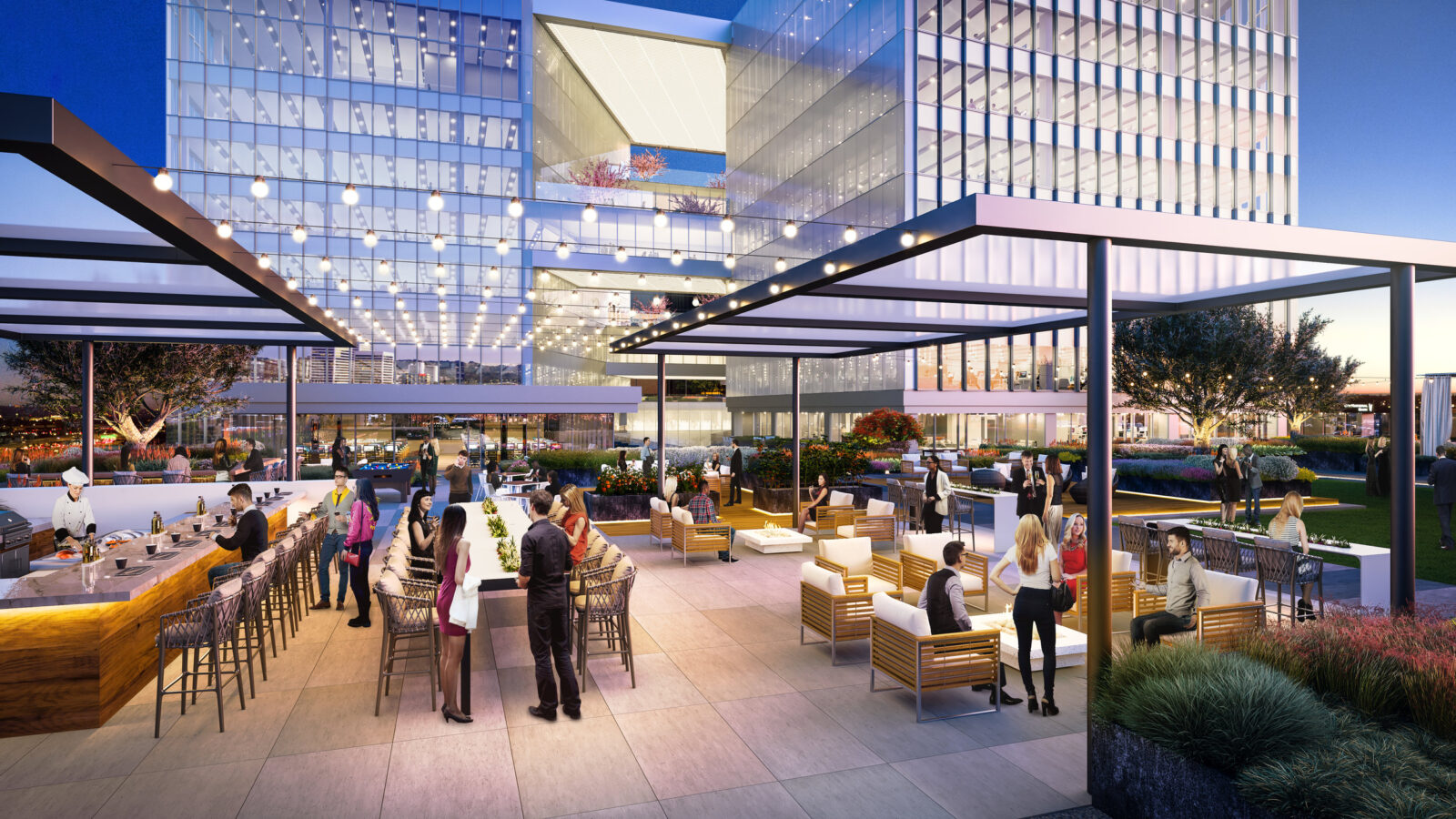
Back to Working, Together
The benefits of amenities in workspaces and the shift towards creating more home-like environments are profound. These two key elements foster employee well-being and highlight the importance of being together. They enhance productivity and position the workplace to be a central hub for the best talent. As we navigate the evolving landscape of work, the future of the workplace lies in what can be offered, balancing amenities and work environments to create spaces that are not only functional but truly enriching for workers while improving an employer’s ability to recruit talent for the future.

